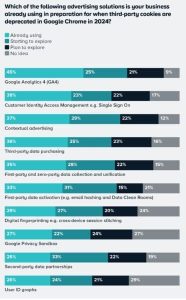8 ways to create a sensory-friendly workplace
With adult autism and neurodiversity on the rise, here’s how to better accommodate employees with sensory processing differences.
BY Gina Brady
It’s the evergreen question: How can employers fully leverage the highest potential of a strong workforce? Quality employees are invaluable. Yet when businesses find it challenging to find top talent, they may be wise to consider a vast, often overlooked talent pool: neurodivergent employees. To tap into this overlooked sector, businesses will need to create sensory-friendly workplaces.
Every human responds differently to different sensory input. One person might not be able to tolerate the itchiness of a wool sweater. The next person might be overwhelmed by loud music. A third person might get headaches from certain kinds of light bulbs. Sometimes people may have tools to cope with sensory inputs, though at times those inputs can be overwhelming and cause extreme discomfort.
Sensory processing differences are typical symptoms for people with autism. Sensory differences can also be possible for people with anxiety, attention-deficit/hyperactivity disorder (ADHD), or post-traumatic stress disorder (PTSD). With Autism Acceptance Month in full swing (April 2 was World Autism Awareness Day), it’s interesting to note that the Centers for Disease Control and Prevention is reporting an increase in autism prevalence. Recent studies also show that ADHD rates are increasing across age groups. Anxiety rates have also increased over the past decade, especially among younger Americans. As more of the population copes with autism, anxiety, ADHD, or related disorders, it is reasonable that sensory concerns may also be on the rise overall.
As such, businesses and organizations will reach a broader audience, customer base, and workforce by considering these eight sensory-friendly accommodations:
Create a sensory-friendly office space
Those with sensitivities may be overstimulated by background noise. Open-concept workspaces and even cubicle setups can result in a loud working environment with competing noises. Employees may benefit from earbuds or noise-canceling headphones. Businesses may also offer a calm, quiet space for employees to work or even to take a break.
Related: What are invisible disabilities?
Overhead lighting, especially fluorescent office lighting, can be too bright and make may buzzing sounds. Many employees prefer lamps or natural lighting. As an alternative, the facilities team could install incandescent lights or add fluorescent light covers.
Other sensitivities may be related to certain fragrances, thus many offices choose to be fragrance-free environments.
Offer virtual or flexible accommodations
Some employees with sensitivities may work better or more efficiently under different circumstances. They may require modifications to or additional options within the dress code. Or, rather than modifying the physical office environment, it may be easier to allow some employees to set up their own preferred working space and to work with these employees remotely.
Include accessible outings
When your company leaves the office, how accessible is the destination? Whether the reason is for happy hour, team-building, or to be out in the community, consider how the environment may impact people with sensitives. For example, consider whether the venue will be loud, crowded, and have bright lighting. Consider whether it will be difficult to navigate to the venue. Additionally, will the venue offer sensory-friendly accommodations for guests? It may be okay to bring your company to loud, crowded venues, though also showing up occasionally in more accommodating places ensures that people with sensory concerns have a location to visit.

Publicize the accommodations
Accommodations aren’t of much use if customers and employees are unaware of the option. Highlight the adaptations using easy-to-find physical signs in your space. Include them in an obvious part of your website and social media as well. For events, showcase the accommodations in the event info or FAQ. For some customers or employees, this information will be the difference of whether they interact with your business or organization.
Integrate accommodations into your operations
Your company or organization may already have sensory-friendly accommodation ready. Still, if your current staff doesn’t know how to provide the accommodations, then the accommodations aren’t readily available. Ensure not only that your business is accessible but also that the options are integrated into your standard business operations and that your employees are familiar with the process.
Provide social narratives
Adults with sensory processing differences benefit from having more available information about what an event will be like. What does the space look like? What is the schedule and flow of the event? Provide photos of the parking lot, the inside of the space, and any other notable visuals that may be helpful. Visual or social narratives or step-by-step guides describing the event can also help employees, customers, and guests know what to expect and how to prepare appropriately. Ultimately, this accommodation can help more people spend more time enjoying your company or organization’s services.
Request feedback
Check in with employees, customers, and other stakeholders through various means to see what additional accommodations would resonate and be appreciated. A variety of check-ins can be valuable, ranging from in-person conversations to social media comments and anonymous surveys.
Reevaluate your accommodations
Just as a business or organization’s goals may change over time, the same may happen with the customer base or workforce. Periodically reconsider whether the current accommodations are still achieving the intended result, or what might be changed to ensure your business is still accessible.
Gina Brady is the Sensory Supports and Training Program Manager for Fraser, a nonprofit working at the intersection of autism, mental health, and disability services. Gina specializes in establishing partnerships with organizations to provide sensory-friendly and inclusive experiences to families throughout the community.
Fast Company
(7)





